The Language of Beads – African Decorative Beads
PRIMITIVE - Friday, January 09, 2015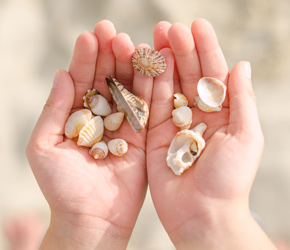 |
|
By Misaki Imagawa
You’re in a cave and it is pitch black. There is no sense of direction, distance or boundaries. You’re alone with yourself and your imagination. You can’t decide if it’s comforting or terrifying. You light a gas lamp and suddenly you spot small white dots in the blackness; first one, then more, some round, others oval. Are they shells? You reach out and touch one, but in your hand it turns out to be a pebble? You reach down to grab another and to your surprise a wooden bead is in your hand. Now something glitters in the dark. It is gold, and upon further examination you discover tusks of ivory and human bones. You illuminate a path before you and colors rain; first blue, then red and green. A cascade of glass beads lights up the dreamscape. They form a path of mismatched ornaments, shifting and rolling, forming a timeline whispering of ages past and lost.
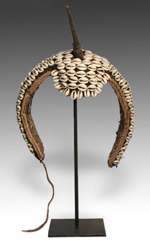 |
|
PRIMITIVE ID# A0602-425 |
Your imagination takes over. You find yourself flowing back hundreds, thousands, tens of thousands of years, until the darkness is illuminated by a beautiful coast. At the edge of the water a young man, one of modern man’s predecessors, dips his hand into a shallow pool and plucks out a tiny, abandoned shell of a snail. From his leather pouch he pulls out a string of beads hanging from a cord, slips this latest piece on the cord and then ties the whole thing around his neck. In due time, he makes his way back to his home, a cave in what is now South Africa, where you are standing, imagining what life must have been like for your unseen friend, the young man who took the time to adorn his life, back then, when survival was the only occupation available to the ambitious.
Welcome to the Blombos cave of South Africa. In 2004, archeologists discovered a string of shells dating to 75,000 years ago. This discovery provided new evidence that the modern concept of self – as evidenced by the desire to adorn one's self – appeared much earlier than previously believed. Yet, regardless of when man’s earliest creation of jewelry began, it has continued, unabated, until today, particularly in Africa; and it is most evidenced through the study of beads.
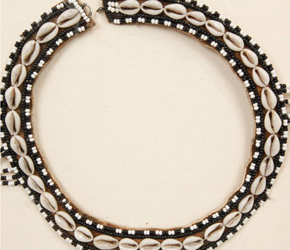 |
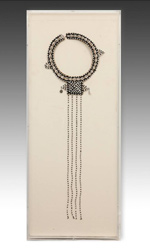 |
|
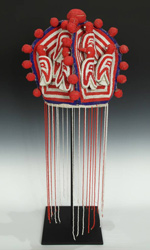 |
|
PRIMITIVE ID# A0402-440 |
The history of beads is as rich as their use and application. They functioned as adornments, decorations, money, indications of power and prosperity, and as talismans. In the beginning, they were adornments and were made of materials readily available in the environment: shells, clay, seeds, twigs, stones, ivory, teeth and bones. Numerous samples of these have been traced back roughly 12,000 years, indicating the popularity of decorative beads among various tribes. As populations thrived and trade flourished, greater value was placed on rarer beads. Cowrie shells, imported from the Maldives, became a prominent form of currency and a public display of wealth, power and prestige. The symbolic use of cowrie shells is still a widely held tradition in African beading today.
The history of glass beads in Africa is equally diverse and unique. In Mali, Roman style and Egyptian Ptolemaic period glass beads were discovered dating as early as 300 BC to 200 AD. Other early imports such as ancient folded glass Islamic glass beads appear to have been created in India and Sri Lanka. Historians believe these rare and valuable gems made their way into Africa overseas or through camel caravan routes that connected ancient Egypt and the Mediterranean.
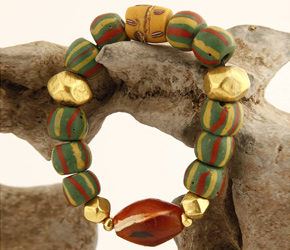 |
|
Glass beads used in trade with Africa acquired the name ‘trade beads’ because scholars were able to trace trade routes by the appearance of like beads along specific paths. All they had to do was connect the dots. Trade beads became a significant market product with the arrival of the Europeans around the 15th century. Glass beads, largely from Venice, were traded for ivory, gold, spices, palm oil and slaves. This new style of bead was immensely appreciated and coveted by African kings and noblemen alike; so much that Venetian glass makers created techniques to mass produce glass beads. They even enlisted the help of neighboring artisans in Bohemia. The beads we see today in most 20th century African art are predominantly Dutch and Italian glass trade beads. However, it should be noted that not all glass beads were imported. African artisans ground and remolded glass, experimenting with glass making techniques that would give birth to unique patterns and motifs exclusive to certain individual tribes.
The use of beads is pervasive in African art. They adorn dolls, aprons, skirts, belts, masks, crowns and headdresses. In some cases, their use is purely decorative. In others, their importance lies in what they symbolize. As it was thousands of years ago so it is today. Elaborate decoration and adornment indicates power, authority, and social status. To the initiated, one look at the quality and quantity of beads worn by a tribal person and you would know immediately where they fall into the social hierarchy. From shells, stones and metal, to Islamic and Venetian glass, beads are a constant in the history of Africa. They speak the language of history, trade, prestige and pride. If you listen closely, you can hear. If you look closely, you can see. If you imagine intently, you can feel this unique language.
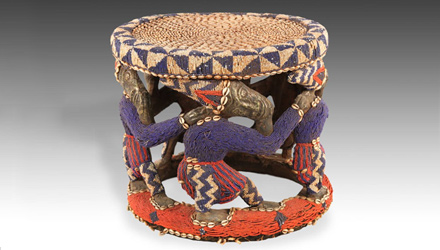 |
Download this Article: The Language Of Beads.pdf